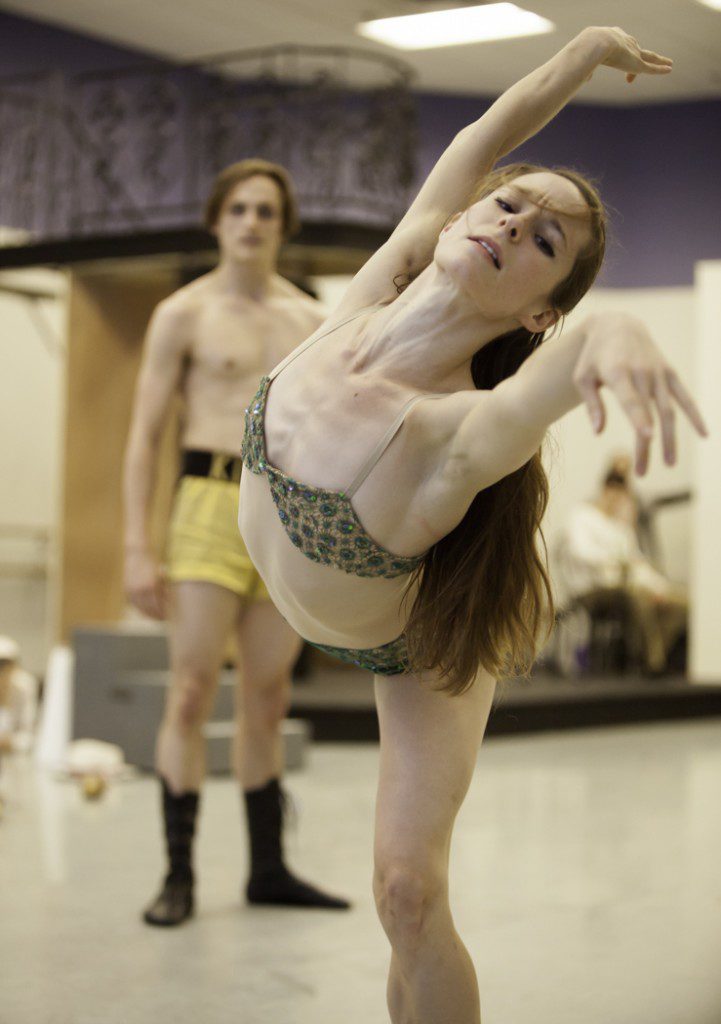
by Alessa Ashley Rogers
Looking forward, looking back.

On October 7, 2014, 27 dancers waited expectantly in Atlanta Ballet’s sun-dappled studio 1. What we knew: Our resident choreographer, Helen Pickett. And the play, Tennessee Williams’ Camino Real which we had been expected to read.
What we didn’t know was how Helen would transform an obscure, largely unsuccessful play into a full-length world premiere ballet with original costumes, sets and score which would be critically acclaimed for its “sheer magic.”
Flash forward 30-some months later and Camino Real is being re-staged at Atlanta Ballet for the second time. Many things are different in our world of the studio and in the larger world. A new president has taken office. At Atlanta Ballet, change is heavy on our minds as thirteen dancers prepare to depart the company at the end of this season.
I am so glad we are finishing this season – this era – with Camino Real because this work is uniquely ours, in a way that not every ballet can be. It was made for us by someone who knows us well- who we are and where we’ve come from, our quirks and habits, our strengths and weaknesses. We’ve been working with Helen since 2011 and created three world premieres together. The mutual trust between Helen and the dancers is why Camino can exist. It’s daring, ambitious and one of a kind, just like the Atlanta Ballet as I have known it.
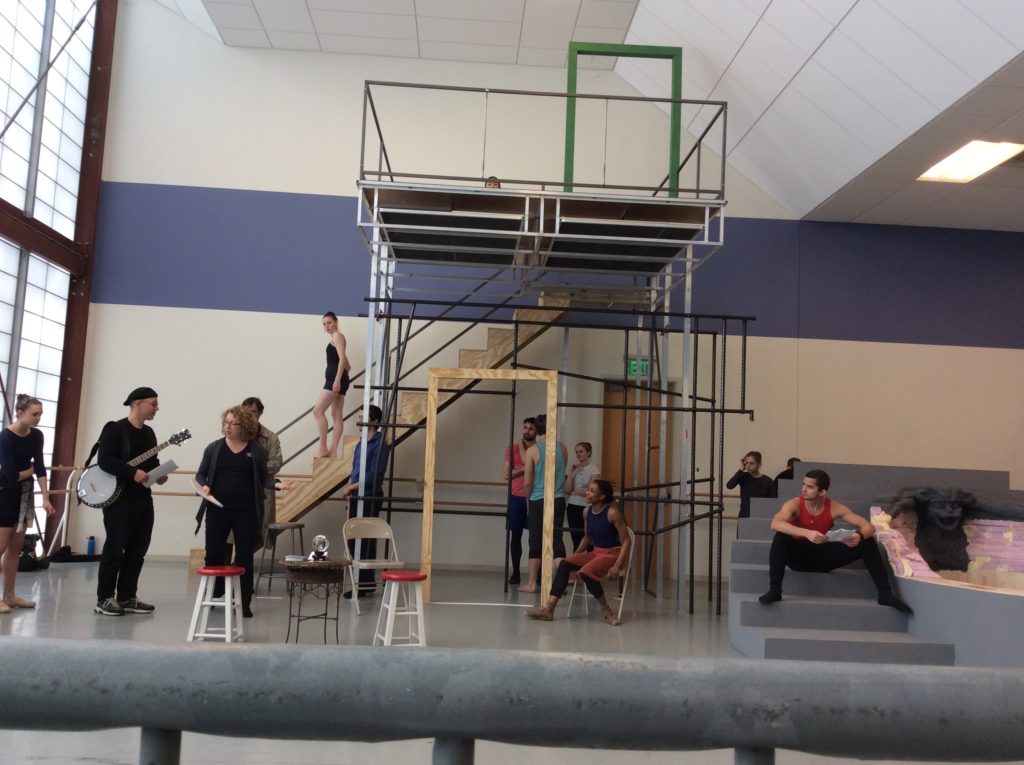
It’s a true collaboration. The music, by British composer Peter Salem is gorgeous. He’s Skyped into some rehearsals and when Helen tells him we need 14 more bars of music for the finale he obliges immediately. The set, created by Emma Kingsbury and David Finn, is epic-1500 pounds of metal, 2 miles of cord to create the look of “rebar.” Our technical director slept in the studio some nights because building the set was so time-intensive. For my part – the gypsy girl Esmeralda – I dance on a second-story balcony. The first time I went up it (running up and down a flight of stairs multiple times in a ballet is not easy!) I got a little woozy- it’s not the sturdiest of platforms!
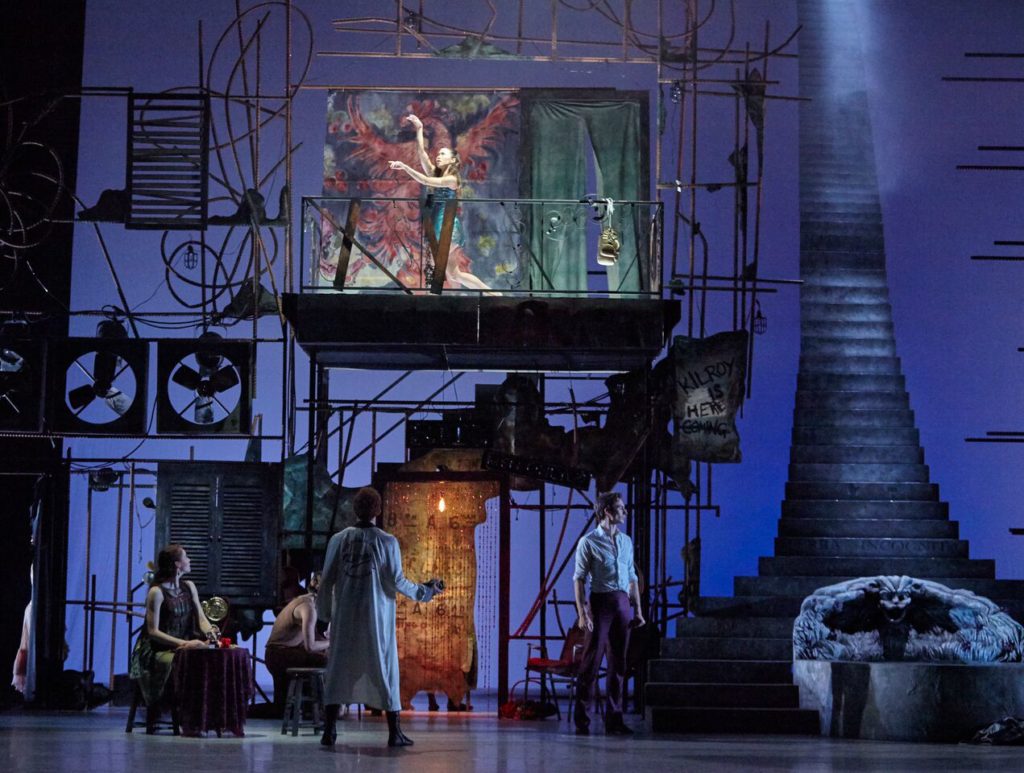
There are elements of this show that you would never associate with ballet: boxing gloves, a running water fountain, dancers in the audience. Perhaps most striking of all is that several of the dancers speak lines from the play. We wear mic packs in our costumes (wherever we can fit them!) and run the wires through our hair. Sounds checks are a normal part of our theater day now.
It’s an unconventional process in the studio as well – laptop computers open everywhere; people scribbling furiously in notebooks, doing character analyses. People mouth lines to themselves, looking a little unhinged. People are approaching character roles in a different and deeper way. Jacob Bush, as Gutman the antagonist, goes fully into his character when he steps into the studio. I try to avoid standing near him- he’s a bit scary these days.
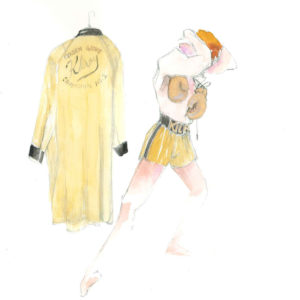
A dramaturge was brought in from a local theater company to help us with the text. We do vocal exercises and learn how to speak from our diaphragms with our coach gently punching our stomachs. It’s especially difficult to speak right after you’ve been dancing. During one text rehearsal, a dancer repeatedly yelled her line, “Help!” It was convincing enough that some office staff rushed to her rescue!
Some people might balk at the idea of dancers talking onstage. But I think it is a beautiful demonstration that dance is still evolving and should not be made to fit into a box, especially when you have a fierce mind like Helen’s in the front of the studio. Tennessee Williams sums it up well, “Make voyages. Attempt them. There is nothing else.”
Camino Real is not exactly a ballet, not quite a play; it’s definitely not musical theater, yet it has aspects of them all. It can’t be defined. Does it need to though? It’s something new. It feels hopeful. It’s breaking open the notions of what dance means and what dancers are capable of. It’s breathing new life into the canon of story ballets.
My last monologue in Camino Real is a prayer, beseeching God to look down at the “last cavaliers” and “those fading legends who come and go in this plaza” and I can’t help but think of the 13 dancers who will bow out with this show. When I say those lines I am saying it for them. They may be bowing out but to me they will never fade.
I also will be leaving. Choosing to leave a company that I have loved, there will be much to miss. Of course. But unlike the characters in the Camino Real, I have a choice whether to walk away. There will always be reasons to stay. There will always be reasons to go. This time I choose to make the voyage.
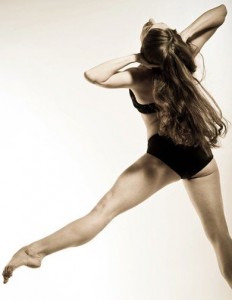
Contributor Alessa Rogers began her dance training with Daphne Kendall and left home at fourteen to attend the North Carolina School of the Arts. Upon graduation she spent one season with North Carolina Dance Theatre II before joining Atlanta Ballet where she has been for the past eight years.
Favorite roles at Atlanta Ballet include Juliette in Jean-Christophe Maillot’s Romeo et Juliette, Margaret in the world premiere of Helen Pickett’s The Exiled, Lucy in Michael Pink’s Dracula, Ophelia in Stephen Mills’ Hamlet, Lover Girl in David Bintley’s Carmina Burana, and Princess Irene in the world premiere of Twyla Tharp’s The Princess and the Goblin.
She has performed works by Jorma Elo, Wayne McGregor, Ohad Naharin, Christopher Wheeldon, Christopher Hampson, Dwight Rhoden and Tara Lee. She has been a guest artist with the National Choreographers Initiative in California and Terpsicorps Theatre of Dance in Asheville, N.C.
In her spare time she likes to read, write, cook vegetables, meditate, travel and rock climb.




